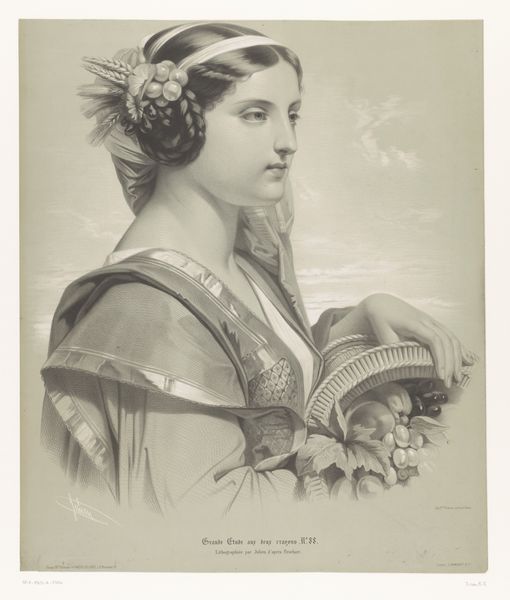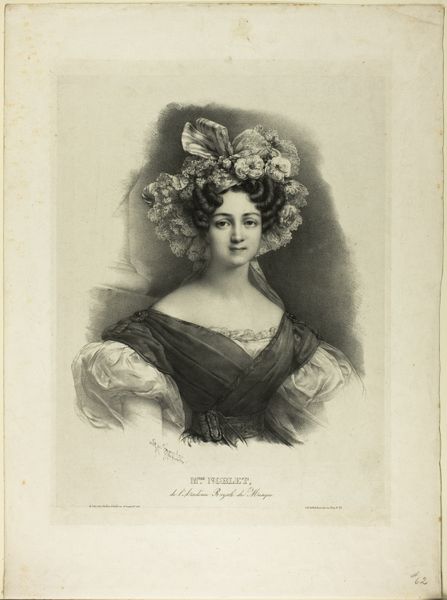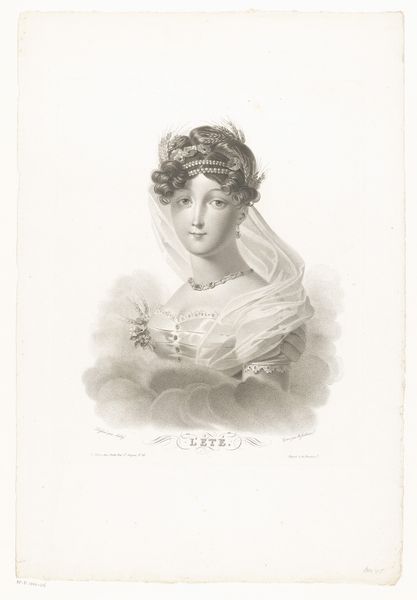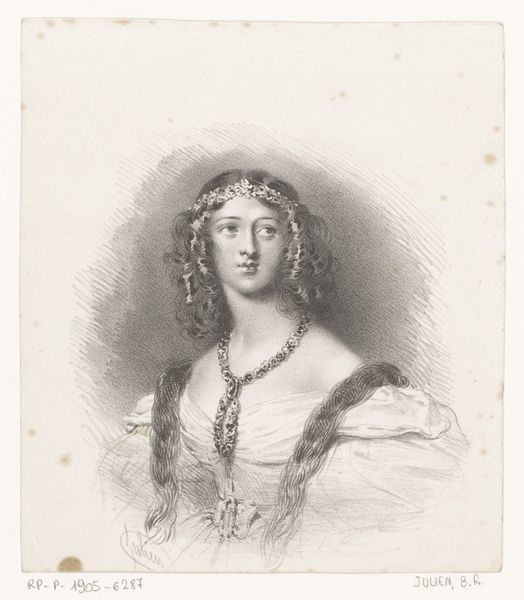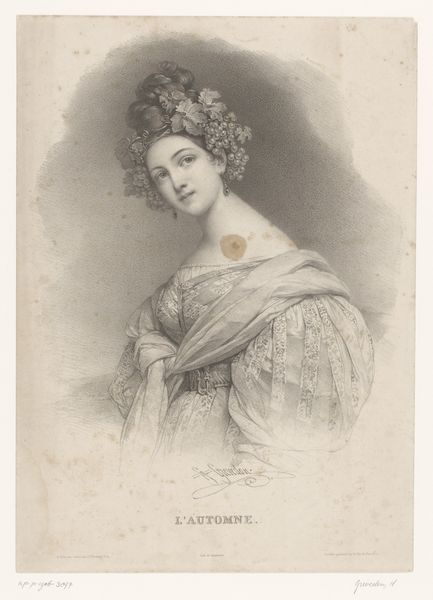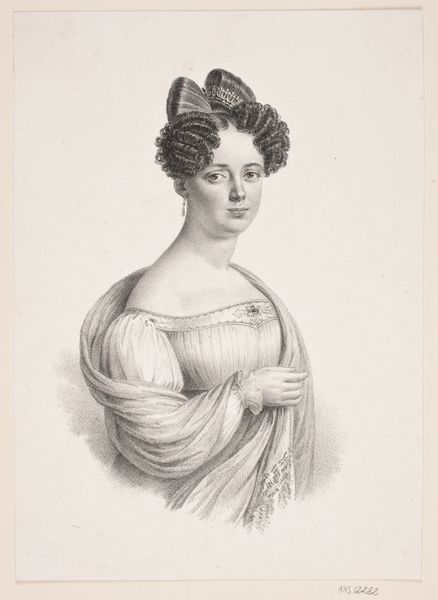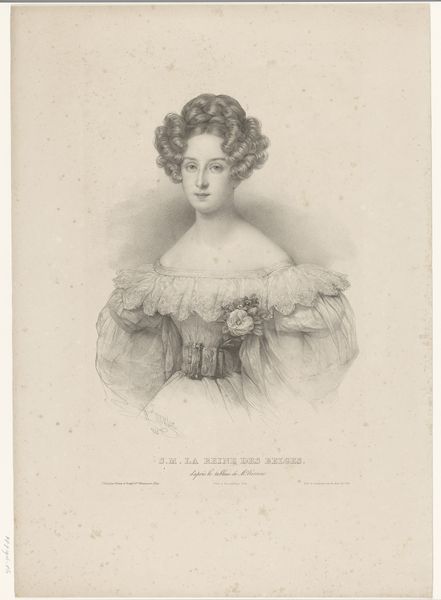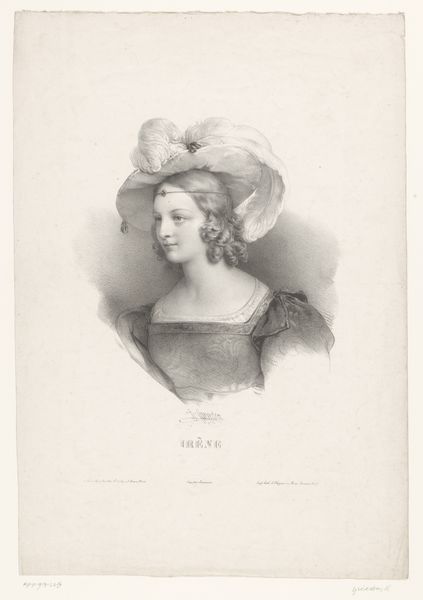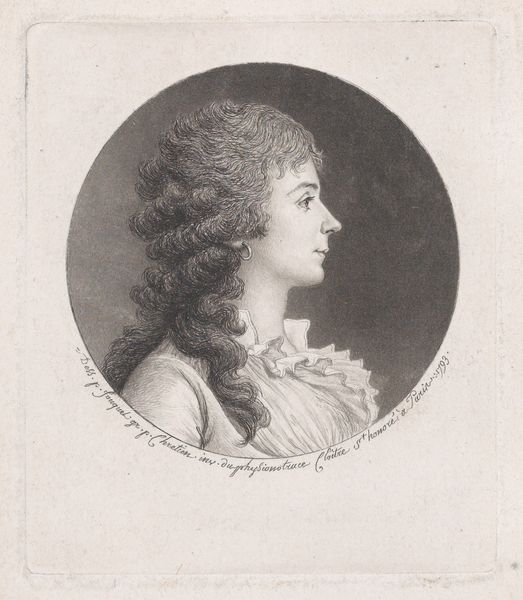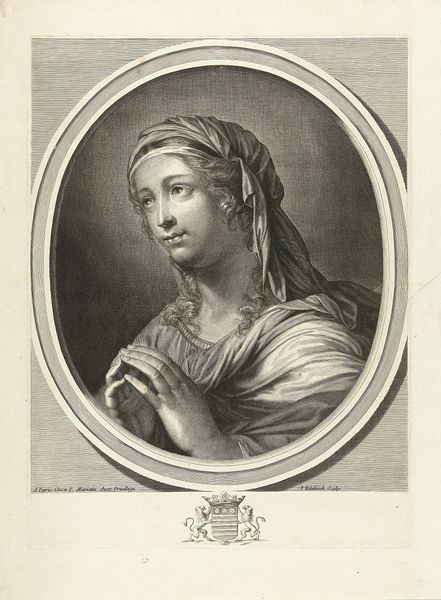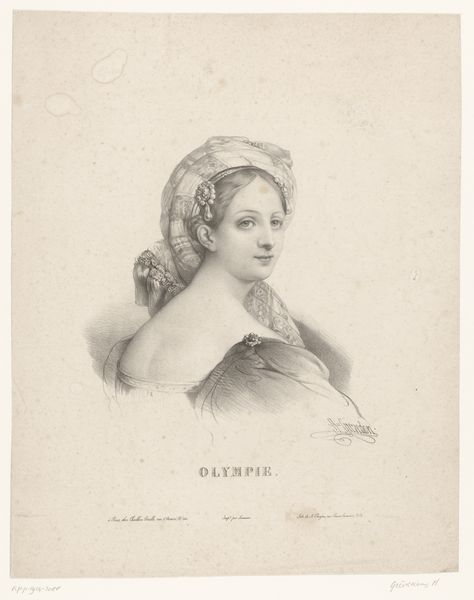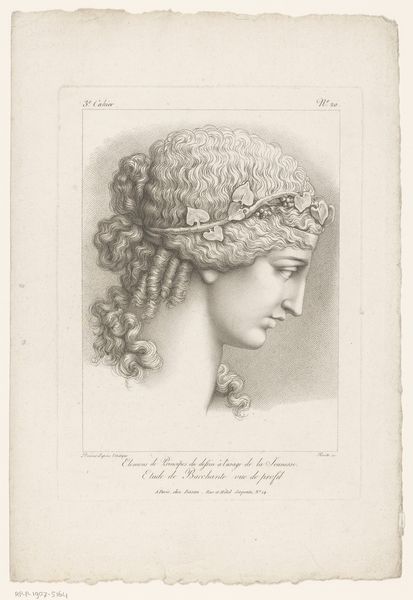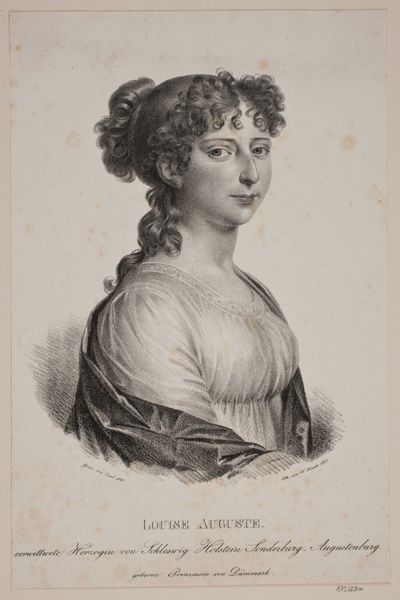
Dimensions: height 635 mm, width 494 mm
Copyright: Rijks Museum: Open Domain
Curator: Ah, here we have Bernard Romain Julien’s "Personificatie van de maand mei," or "Personification of the Month of May," created sometime between 1851 and 1870. Editor: You know, the first thing that hits me is the sheer innocence. She looks so untouched by the world, almost like a nymph emerging from a grove of lilacs. It's kind of dreamy, you know? Curator: That's precisely the intent! The image relies heavily on allegory, aligning with Romanticism’s focus on emotional expression. Such personifications were a common trope, weren't they, for visualizing abstract concepts like seasons or months. These weren’t just pretty pictures; they were actively shaping civic virtues by ascribing characteristics. Editor: Civic virtues, huh? I get more of a feeling of spring fever here, with that delicate flower crown. It gives me that feeling of youth and fleeting beauty. But when you said civic virtues, I almost choked, imagining someone using this to advertise tax returns. Curator: Well, not precisely tax returns, but there was certainly a visual language developing for associating authority and idealized characteristics in the burgeoning public sphere. Think of the illustrated press—these images circulated widely, fostering ideals. Editor: Okay, I can see that. Especially thinking about what it might have meant at the time, it is cool how those blossoms hang like tear drops almost— it does get one thinking on time passing or, the season ending... there's also something hauntingly sweet about her look. She looks out at us—the soon to pass beauty. Curator: Absolutely. The soft gradations in the lithography contribute to the romantic sentiment and contribute to its broad appeal across social classes at the time it was first published. It gives one a taste of how Romanticism pervaded even quotidian visual culture in that period. Editor: Yeah, thinking back on the sheer, inescapable popularity and spread—of that time it is nice knowing there were people who made really nice things like this for us to look at today. Curator: Indeed. And it provides insight into a very particular cultural moment when allegorical figures could embody both artistic skill and social commentary.
Comments
No comments
Be the first to comment and join the conversation on the ultimate creative platform.
